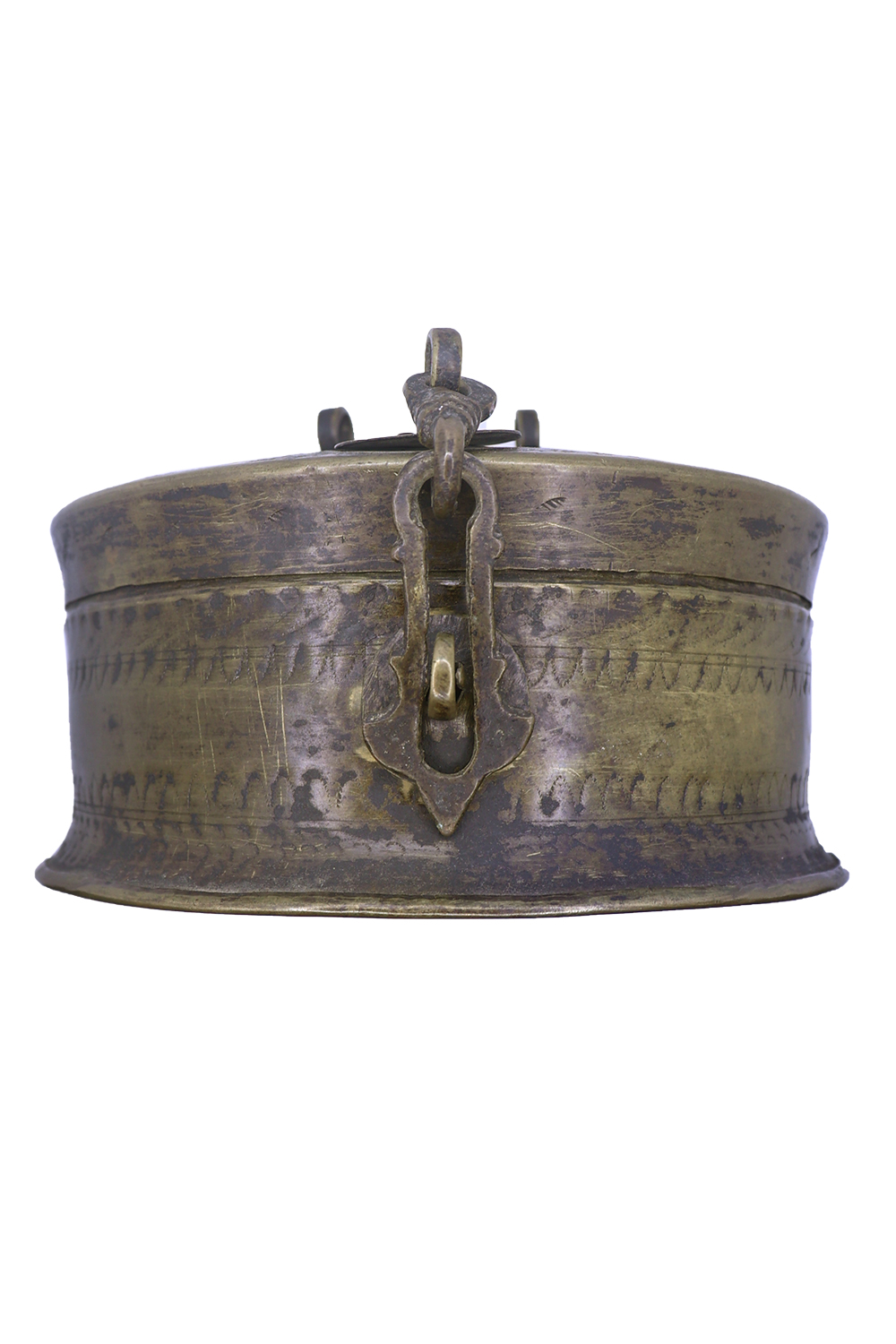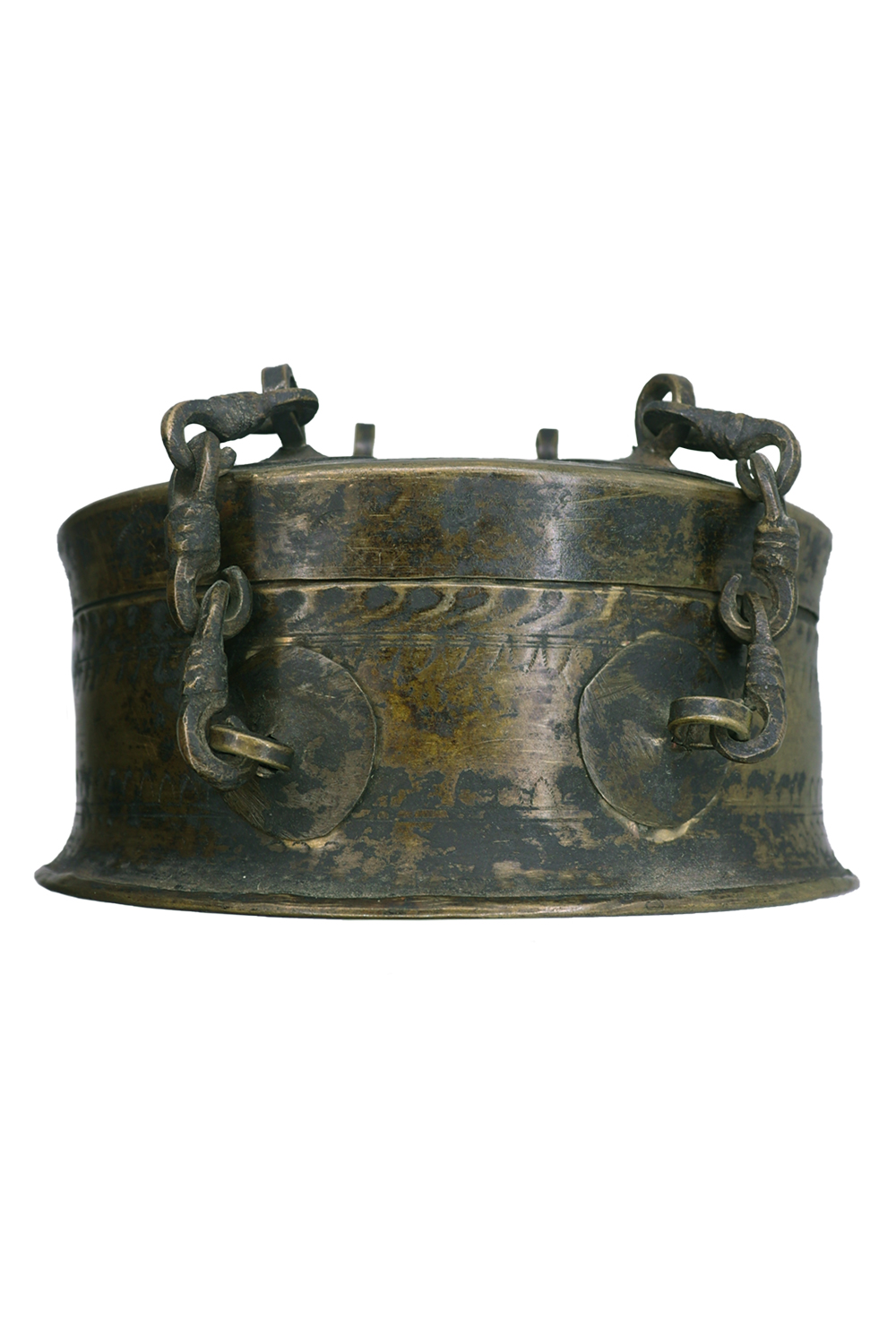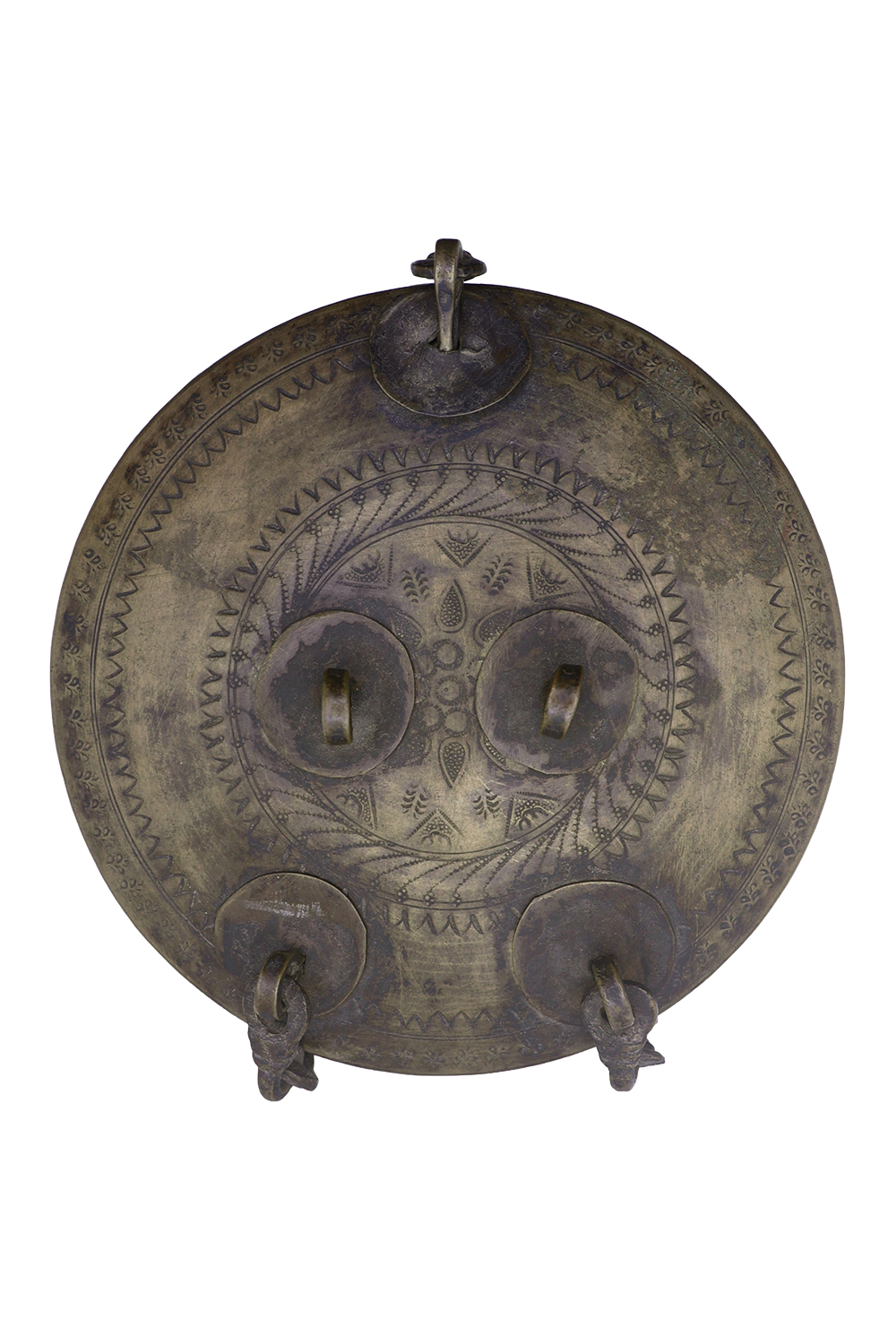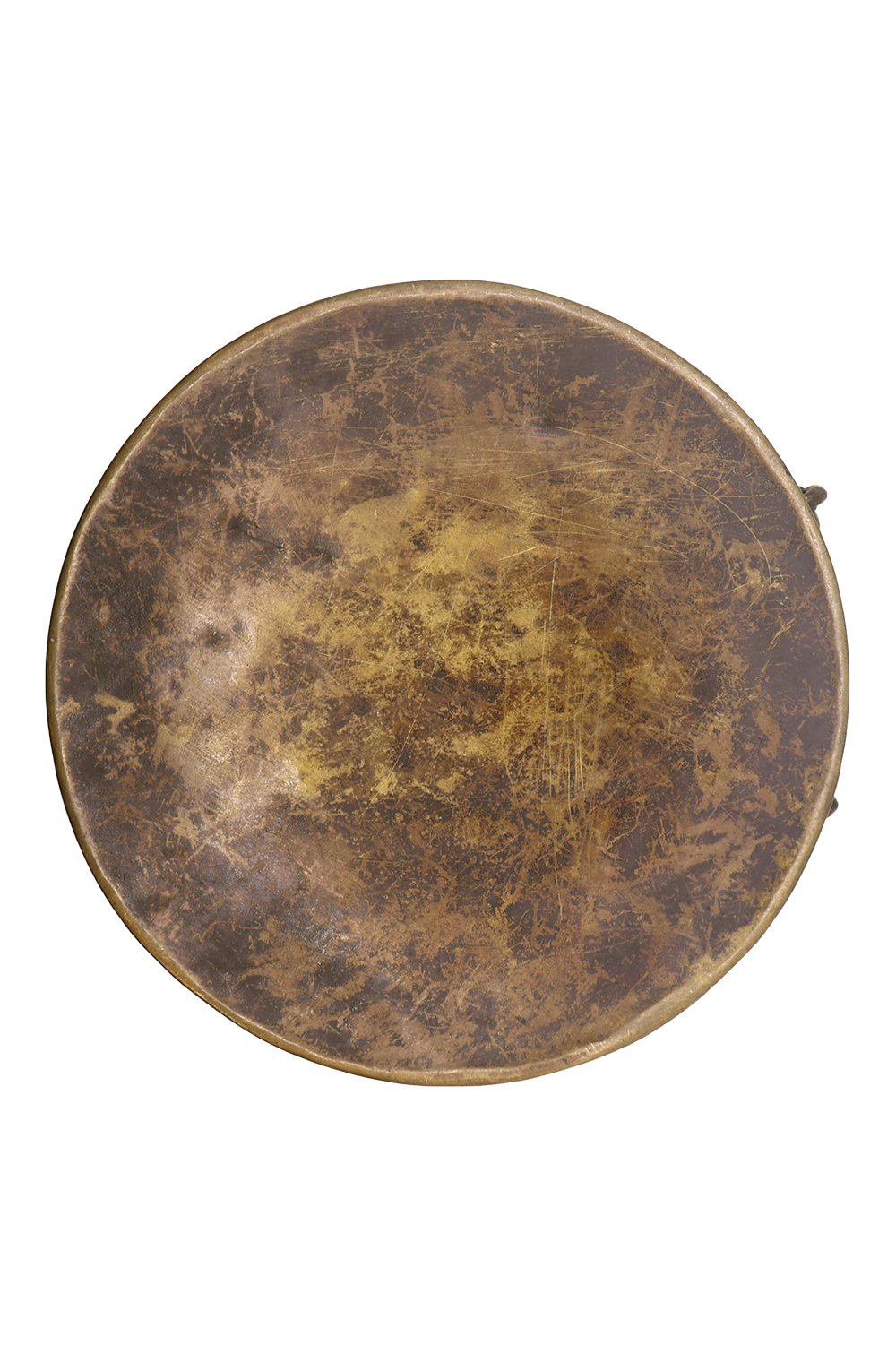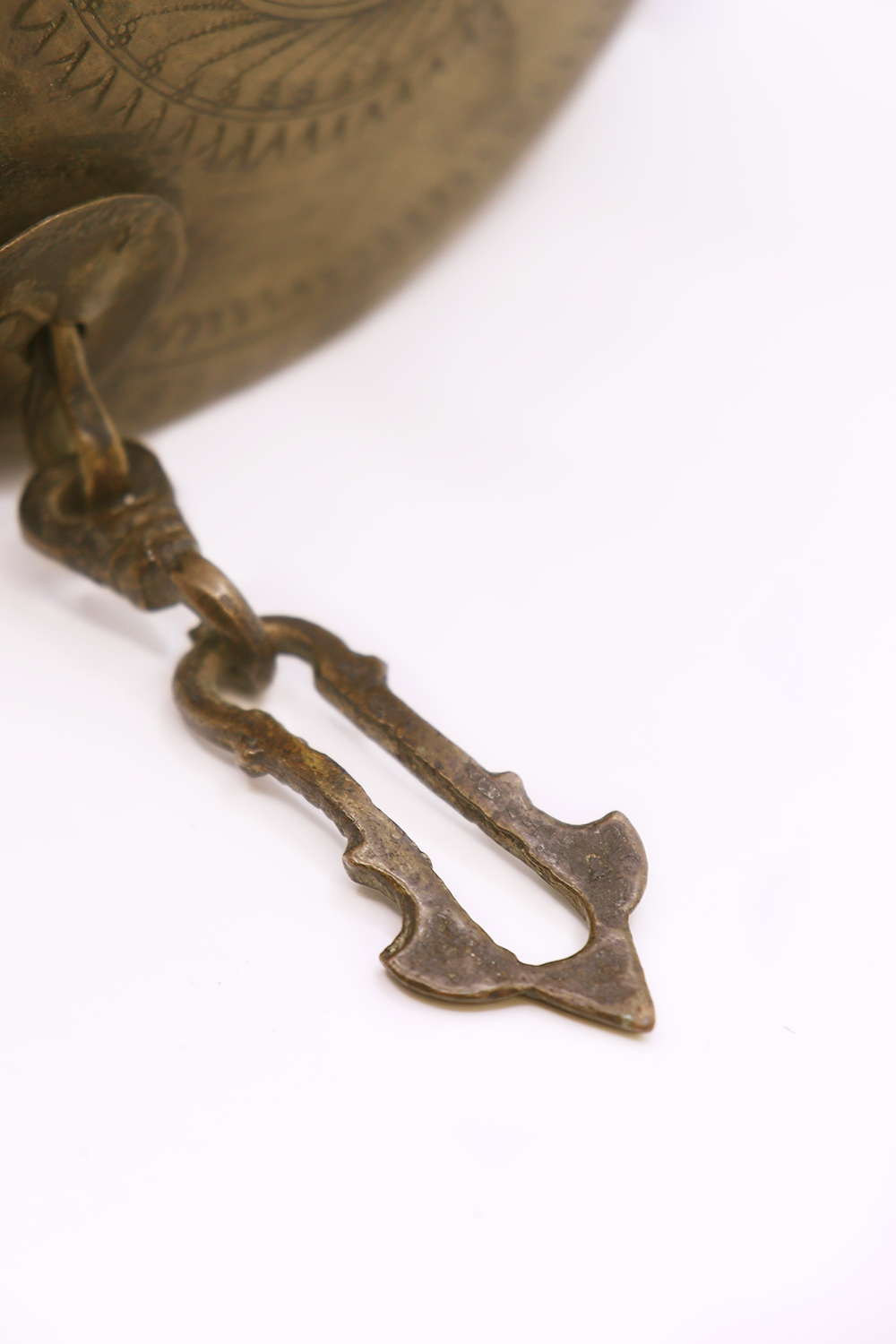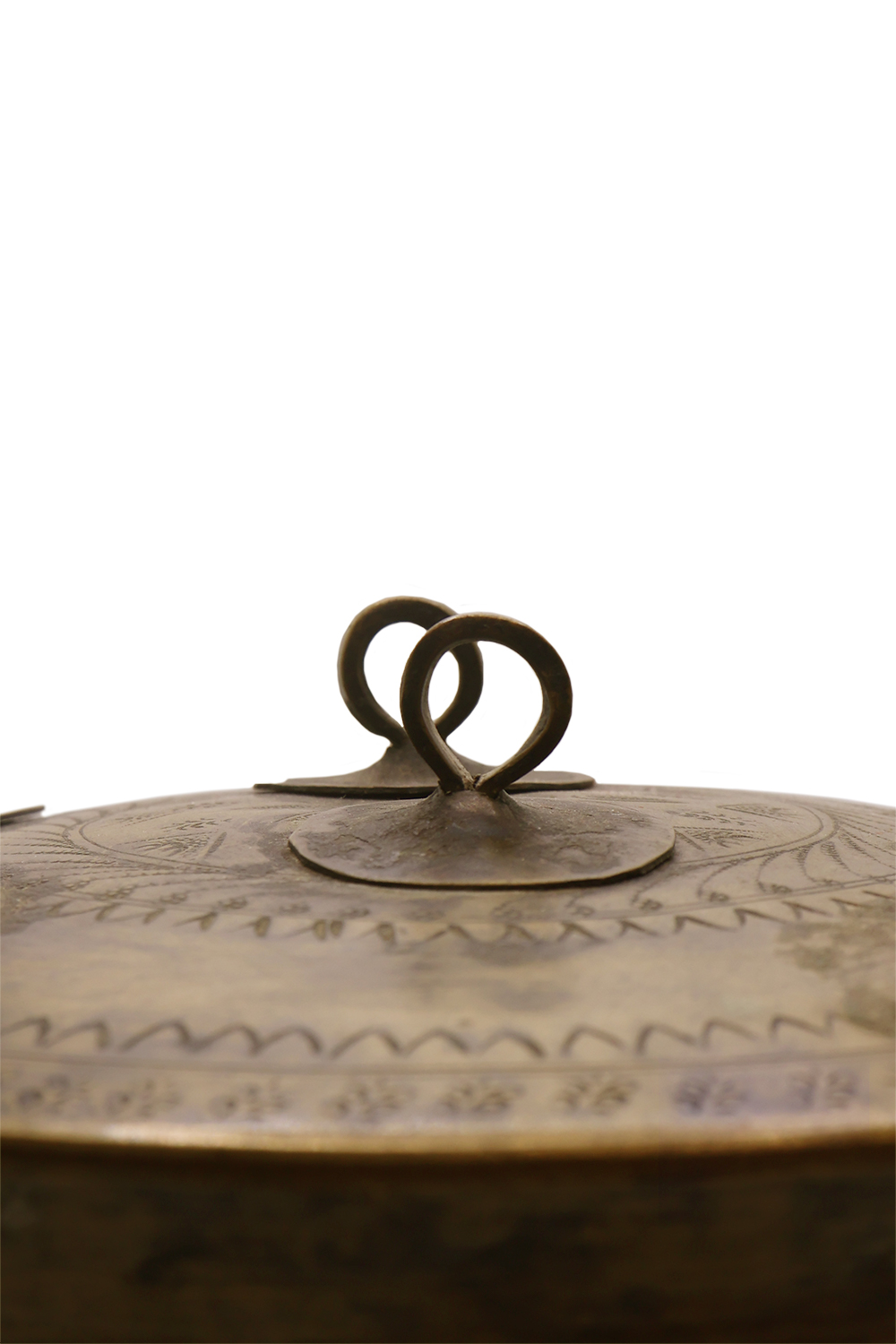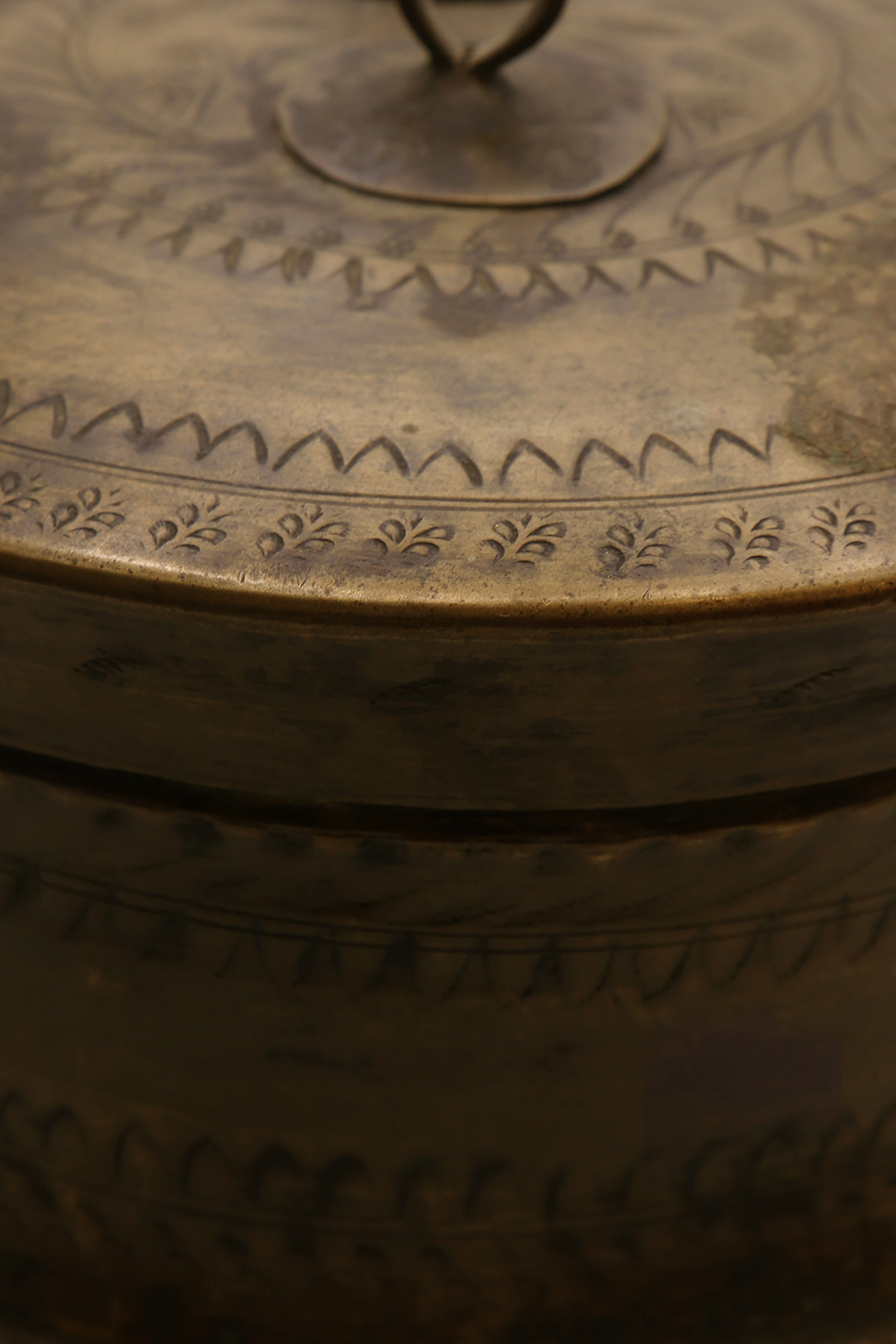This exquisite example of traditional Indian craftsmanship is a beautifully crafted domed box, most likely originally used for storing spices, paan, or betel, known as a “jali paan dan.” Made from heavy-gauge brass, it features intricate hand-engraved patterns on both the body and the lid, with ornate chain hinges and a clasp. The latch mechanism ensures it can be securely closed. The box is also hand-hammered with impressive detail, showcasing fine craftsmanship. The top handle on the lid is missing.
It makes a striking decorative piece and could also serve as a charming jewelry box.
Weight: 765 gramos
Material: Brass
Size: 18 cms Øx11 cms
Origin: Northern India
Date: Late 19th century
Betel nuts, often prepared with lime, were traditionally stored in such ornamental boxes, often with several smaller compartments inside. This practice was widespread across Asia and continues today in countries like Myanmar and India, as well as among the hill tribes of Southeast Asia.
Historically, a *pandan* like this would store the prepared betel quid (a combination of areca nut, betel leaf, and lime paste), rather than the individual ingredients. Chewing betel has been a long-standing tradition across Asia, comparable to tobacco use in the West. It plays an important role in hospitality, courtship, and ceremonial occasions, often featured in royal regalia and cultural rituals.
1 in stock
| Weight | 1 kg |
|---|
